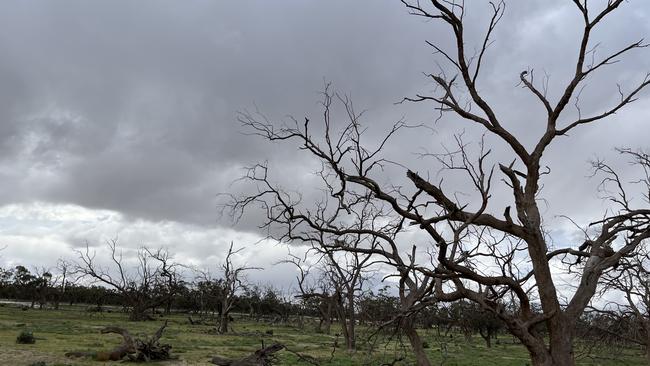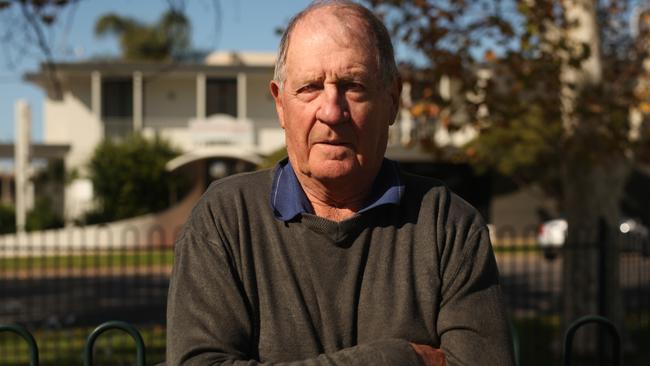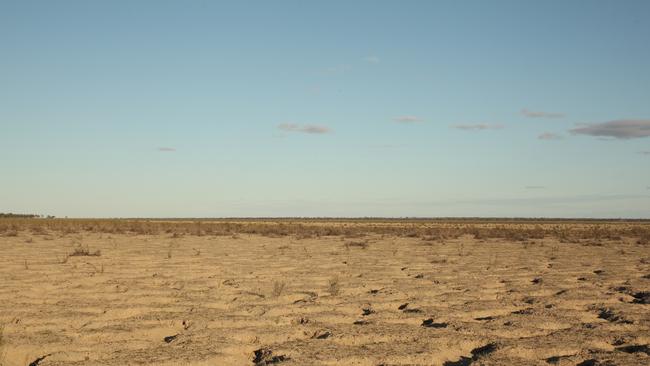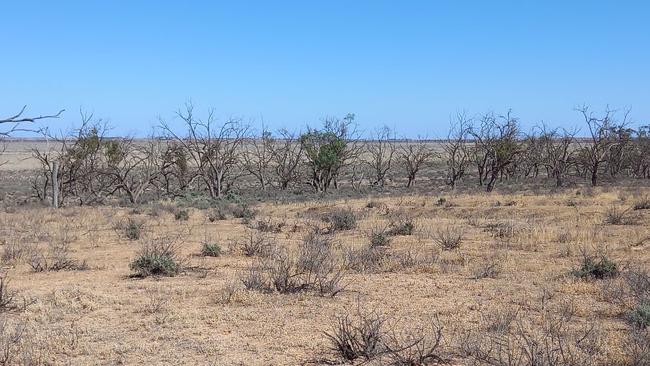Revealed: Why the Lower Darling flood has been held back
Farmers in Far West NSW say a “bizarre” decision by WaterNSW will threaten livelihoods and the environment.

A once-in-a-decade flood in far west NSW has been held back to keep five roads open and protect two septic tanks, according to modelling and meeting minutes seen by The Weekly Times.
Farmers in the region, which last received a significant flood in 2011, are furious.
Farming groups Anabranch Water and the South West Water Users Association say the failure to flood hundreds of kilometres of flood plain may have cost graziers and grain producers millions in lost productivity and caused long-term damage to the environment.
South West Water Users Association chairman and retired irrigator Howard Jones said he couldn’t understand the decision.
“They (WaterNSW) have a system they are responsible for in its entirety, and this process is going to kill it,” he said.
Minutes of a May 10 Lower Darling stakeholders meeting, seen by The Weekly Times, revealed the NSW Office of the Environment also raised concerns about the decision to hold back the flood, and wanted the release increased.

CONCERNS FOR MENINDEE
Menindee residents have labelled the decision to hold back the flood “bizarre” and say they are not being listened to.
Menindee resident and former State Emergency Services volunteer Graeme McCrabb and Darling River Action Group president Ross Leddra say they are concerned WaterNSW’s failure to release a large pulse of water from Menindee Lakes could lead to more intense flooding in two months’ time, when water from Queensland and northern NSW reaches the township.
“We’re not making any airspace in the lakes. There is no room for any influx of water,” Mr McCrabb said.
“If there is a big pulse that comes over the Queensland border, and we end up with 30 or more gigalitres coming in through Wilcannia in the next four or five weeks, there’s nowhere to put that water. It has to go downstream and it will flood houses. It is potentially going to impact a lot more homes (than it would if releases were gradually increased now),” he said.
Menindee Lakes were at 118 per cent capacity this week after widespread rainfall in the northern Murray Darling Basin flowed down the Darling River over summer, and there is more water on the way. Upstream, the gauge at Wilcannia registered flows of almost 23,000 megalitres per day on Monday.
A WaterNSW spokesman said in a statement the agency would hold releases from Menindee Lakes back at 18,000ML per day until larger volumes of water arrived, at which point the agency would increase releases.
“Should a larger volume of inflow trigger a transition to flood operations, WaterNSW will act in accordance with its operating rules, including release rates above 18GL/day (18,000ML) if necessary to protect the lakes’ infrastructure,” the spokesman said.

FLOOD HELD BACK
WaterNSW’s decision to hold water releases at 18,000ML a day means there will be enough water to fill the channels of the Darling and Great Darling Anabranch rivers downstream of Menindee, but not enough to spill over on to large areas of flood plain.
A WaterNSW spokesman in a statement said the agency had decided to cap releases from Menindee at 18,000ML because higher releases “pose a risk to property”.
Five roads would be affected by floodwater if releases were increased, according to a spokesman for the NSW Department of Planning and Environment.
The releases would affect access to properties, but would not be enough to inundate properties.
“The modelling scenarios … indicate that some residential buildings would become surrounded by water at releases of 18,500ML a day, but no buildings will be inundated above floor level at 24,000ML a day releases,” the spokesman said.
A DPE staff member told a meeting of river stakeholders on May 10 “two septic tanks” would also be affected, according to meeting minutes obtained by The Weekly Times.
“DOESN’T MAKE SENSE”
Mr McCrabb said WaterNSW’s decision to cap releases from Menindee Lakes “doesn’t make sense”.
He urged the department to release its modelling publicly.
One of the roads the department said would be affected by flooding had “one property and that’s a holiday home”, Mr McCrabb said.
He said more clarity was needed about how many homes would be affected and whether they were permanent residences.
A spokesman for the department said they were not releasing the full report to maintain the privacy of affected landholders.
“The Department are exploring the feasibility of longer term, potential infrastructure solutions with a view of being able to increase releases in a safe way,” the spokesman said.

FLOODING “URGENT”
Mr Jones said it had been more than 10 years since the last significant flood on the Lower Darling and Anabranch rivers, and the environment needed water.
“We see a sense of urgency in getting this flood through so the river gets to drink,” Mr Jones said.
Chair of Anabranch Water and third-generation farmer Paul McPherson said it had been more than 10 years since an ephemeral lake on his property – Lake Milkengay – had received any water. Trees in the lake had since died from lack of water, he said.
According to modelling by Anabranch Water, a big flood on the Anabranch was worth about $66m to the local economy, through increased pasture and cropping.
Mr Jones said a flood event on the Lower Darling river could increase the region’s average annual revenue of $150 million by about 30 per cent.

ENVIRONMENT DEPARTMENT VOICES CONCERNS
Minutes of a May 10 Lower Darling stakeholders meeting, seen by The Weekly Times, have revealed the decision to limit releases from Menindee Lakes to 18,000ML a day was not supported by the NSW Office of the Environment.
An Office of the Environment staff member present at the meeting said there was “no merit” from an environmental perspective to releasing water for two weeks at 18,000ML a day.
The environment’s preference was for a pulse of water above 21,000ML a day, the staff member said.
“This is a prime opportunity to get water on the flood plain as the flows coming down the Barwon Darling may not be seen for a long time,” the staff member said, according to minutes provided by WaterNSW.
NSW State Emergency Services also distanced itself from the decision during the same meeting, saying it provided advice to WaterNSW, which controlled releases from Menindee Lakes, but did not have the power to decide whether a release would go ahead.





